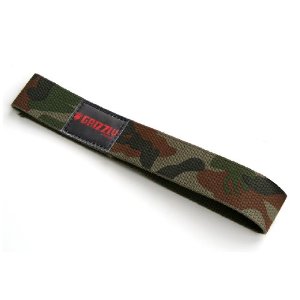How important is it to get a fast-absorbing protein or amino supplement after you train? Hopefully this article will help you make a decision based on research instead of supplement hype.
The bodybuilding dogma has been to mix whey protein with water and a simple carb (like dextrose or maltodextrine). The theory is to maximize the speed of digestion/absorption. Milk, according to this argument, may slow down digestion/absorption and the speed at which nutrients can be replenished in the muscles.
I’ve based my milk-drinking argument on research like this:
There is growing scientific evidence to support the use of low-fat milk following exercise by both individuals and athletes who habitually undertake strength or endurance training. There is data which suggests that fat free milk is as effective as, and possibly even more effective than, commercially available sports drinks at promoting recovery from strength and endurance exercise. Further work is required to better understand the physiological mechanisms by which milk exerts its actions following exercise and training. Milk also has the added benefit of providing additional nutrients and vitamins that are not present in commercial sports drinks. In conclusion, fat free milk is a safe and effective post-exercise beverage that has been shown to promote recovery from exercise and should be considered as a viable alternative to commercial sports drinks by lactose tolerant individuals. 1
I’ve since run across even more “ammunition” for the post workout milk argument (a friend from a bodybuilding forum helped me out). It seems the mixture of a fast-absorbing protein (like whey) and a slower absorbing protein (casein) is a really good idea.
Here’s the potential problem with a whey-only (no milk) shake: the liver is pretty efficient at converting amino acids to glucose (sugar):
Our analysis indicates that amino acids are the major fuel of liver, i.e., their oxidative conversion to glucose accounts for about one-half of the daily oxygen consumption of the liver, and no other fuel contributes nearly so importantly. The daily supply of amino acids provided in the diet cannot be totally oxidized to CO2 in the liver because such a process would provide far more ATP than the liver could utilize. Instead, most amino acids are oxidatively converted to glucose. This results in an overall ATP production during amino acid oxidation very nearly equal to the ATP required to convert amino acid carbon to glucose. Thus gluconeogenesis occurs without either a need for ATP from other fuels or an excessive ATP production that could limit the maximal rate of the process. The net effect of the oxidation of amino acids to glucose in the liver is to make nearly two-thirds of the total energy available from the oxidation of amino acids accessible to peripheral tissues, without necessitating that peripheral tissues synthesize the complex array of enzymes needed to support direct amino acid oxidation. 2
Hopefully you see the issue: whey taken post workout could actually be broken down into glucose (as much as two-thirds of it). The muscles need glucose to replace glycogen, but that’s not why most of us are taking a protein shake.
Two studies have reinforced this idea–here’s the first:
Our results confirm the major role of kinetics in dietary nitrogen postprandial utilization and highlight the paradox of MSPI, which, despite its high Protein Digestibility Corrected Amino Acid Score, ensures a rate of amino acid delivery that is too rapid to sustain the anabolic requirement during the postprandial period. Milk proteins had the best nutritional quality, which suggested a synergistic effect between soluble proteins and caseins.3
And the next study:
We compare the effects of a moderate hypocaloric, high-protein diet and resistance training, using two different protein supplements, versus hypocaloric diet alone on body compositional changes in overweight police officers. A randomized, prospective 12-week study was performed comparing the changes in body composition produced by three different treatment modalities in three study groups. One group (n = 10) was placed on a nonlipogenic, hypocaloric diet alone (80% of predicted needs). A second group (n = 14) was placed on the hypocaloric diet plus resistance exercise plus a high-protein intake (1.5 g/kg/day) using a casein protein hydrolysate. In the third group (n = 14) treatment was identical to the second, except for the use of a whey protein hydrolysate. We found that weight loss was approximately 2.5 kg in all three groups. Mean percent body fat with diet alone decreased from a baseline of 27 ± 1.8 to 25 ± 1.3% at 12 weeks. With diet, exercise and casein the decrease was from 26 ± 1.7 to 18 ± 1.1% and with diet, exercise and whey protein the decrease was from 27 ± 1.6 to 23 ± 1.3%. The mean fat loss was 2.5 ± 0.6, 7.0 ± 2.1 and 4.2 ± 0.9 kg in the three groups, respectively. Lean mass gains in the three groups did not change for diet alone, versus gains of 4 ± 1.4 and 2 ± 0.7 kg in the casein and whey groups, respectively. Mean increase in strength for chest, shoulder and legs was 59 ± 9% for casein and 29 ± 9% for whey, a significant group difference. This significant difference in body composition and strength is likely due to improved nitrogen retention and overall anticatabolic effects caused by the peptide components of the casein hydrolysate. 4
Having said all this, I’d encourage you not to obsess over post workout nutrition–I believe it is one of the most over-analyzed aspects of training. One study, in fact, divided subjects into three groups. Some drank a protein shake in the morning and evening. Others drank their protein supplement immediately before/after training, and a third group did not use supplements at all. All three groups made improvements, but there were no differences between the three groups in terms of strength, power, or body composition (those who took no supplements did just as well).5
Update:
The more research I run across the more I’m convinced post-workout protein just doesn’t matter that much. I recently ran across a meta-analysis which looked at several studies. The researchers concluded that pre or post workout protein does nothing to enhance strength or hypertrophy.6
Having a protein shake after you train is a convenient way to get extra nutrients and calories, but it isn’t going to make or break your gains. Focus more on your overall training and nutrition and don’t obsess over the timing of supplements.
I’d highly recommend Brad Pilon’s How Much Protein book if you’d like an eye-opening look at the research. I cut back on my use of supplements after reading it and haven’t seen a drop in strength.
References:
1. JISSN, 2008 Milk: the new sports drink? A Review
2. Physiol Rev. 1992 Apr;72(2):419-48.
4. Annals of Nutrition & Metabolism 2000;44:21-29
5. Int J Sport Nutr Exerc Metab. 2009 Apr;19(2):172-85.
6. The effect of protein timing on muscle strength and hypertrophy: a meta-analysis Journal of the International Society of Sports Nutrition 2013, 10:53 doi:10.1186/1550-2783-10-53


